Published Nov 19, 2024
The Journey from Star Trek Generations to Picard's Final Season
For the film's 30th anniversary, let's investigate the inextricable link between Generations and Picard's final chapter.
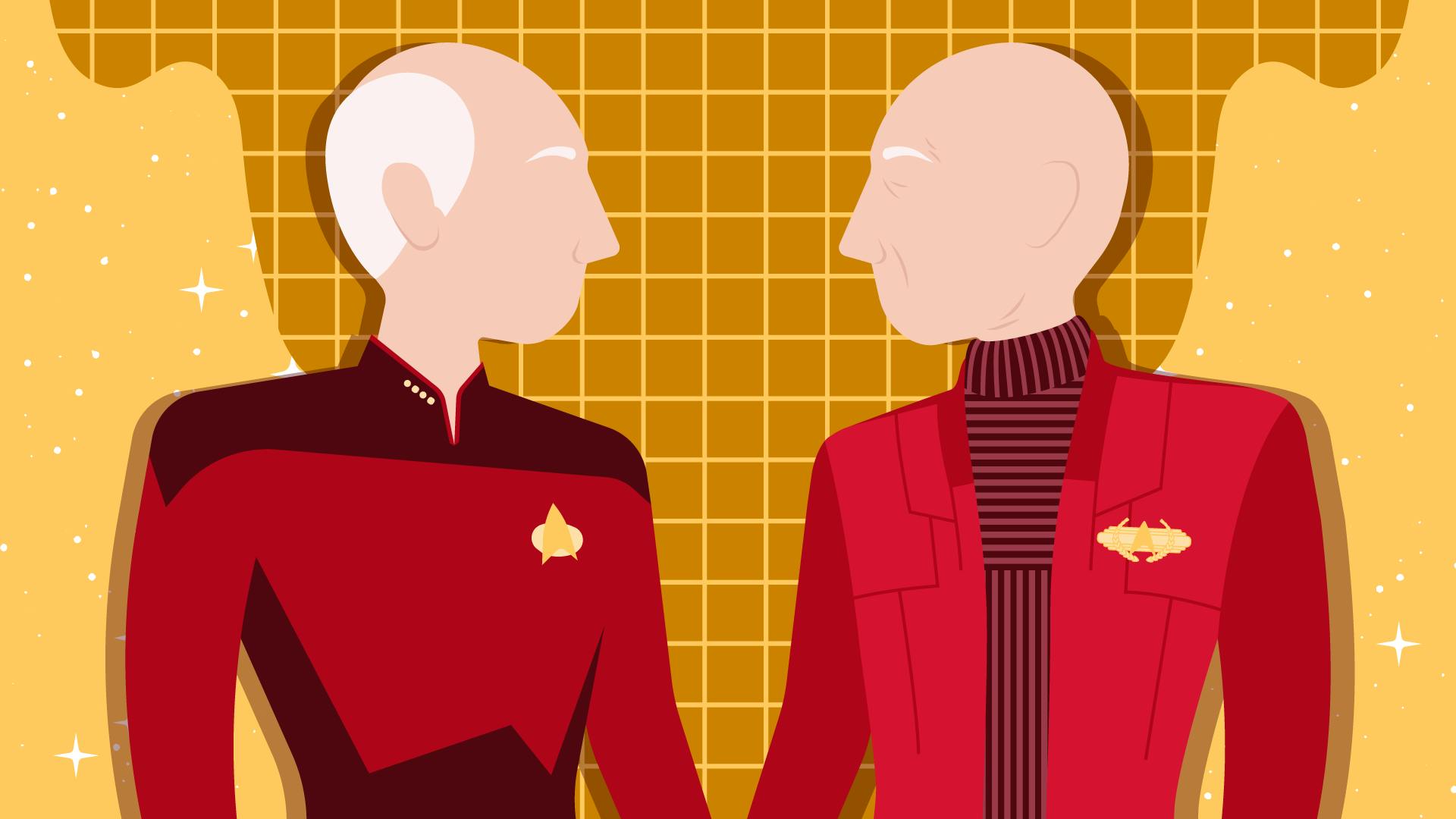
StarTrek.com
's acclaimed final season delivered the perfect blend of 24th-Century nostalgia and 25th-Century intrigue, pairing fan-favorite legends with original characters to spin a thrilling 10-episode tale. Boasting musical cues from and a post- storyline, Picard's connections to the films ran deep.
The third season also paralleled and tied into numerous threads from , the first movie to chronicle the voyages of Captain Jean-Luc Picard and his crew.
From pivotal plot elements to subtle callbacks, let's investigate the inextricable link between Generations and Picard's final chapter.
Retirement Speeches
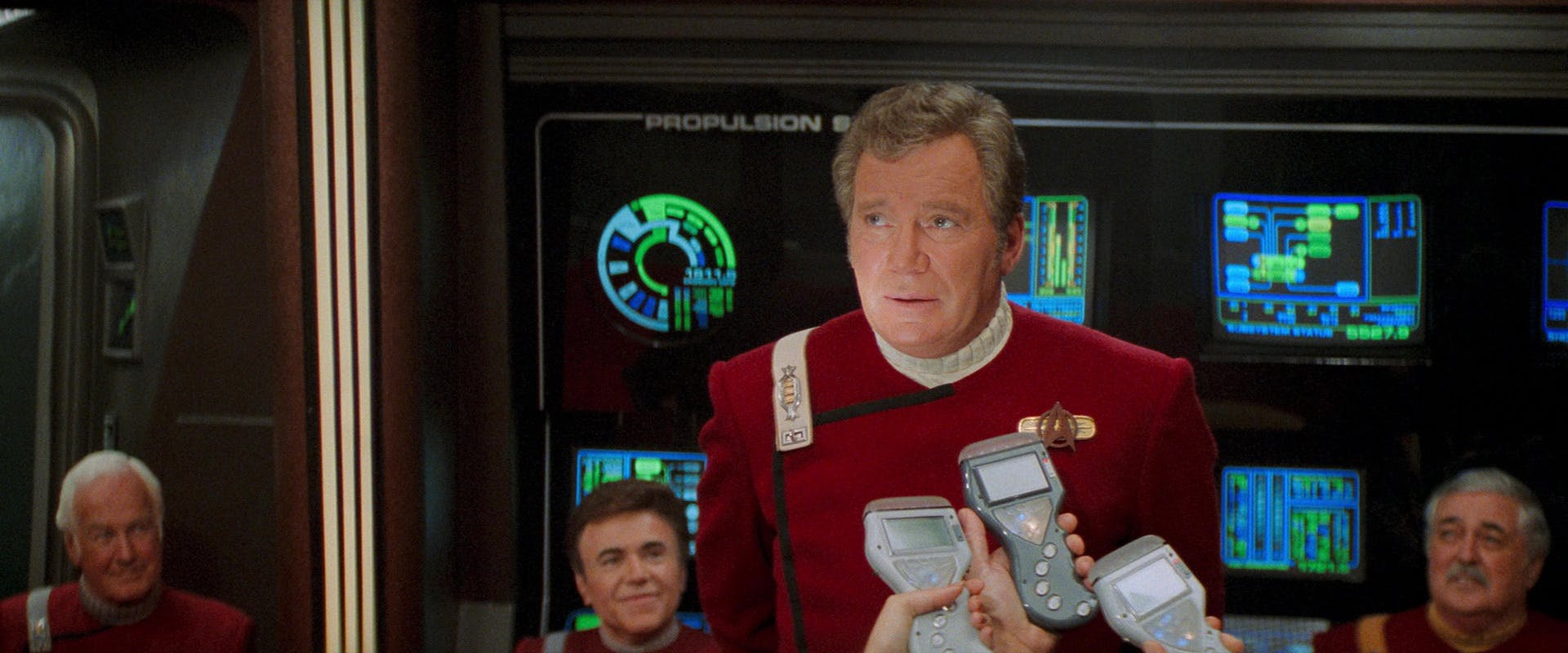
Star Trek Generations
StarTrek.com
Generations began with Captain James T. Kirk's tour of the U.S.S. Enterprise-B, a media-filled frenzy that was more of a publicity tour than a formal starship inspection. The Federation journalists pressed the captain for comments about the vessel and his retirement, but Kirk found the affair awkward and made sure his answers were brief.
Picard's "" mirrored this transition from active duty to elder statesman, as both William T. Riker and Jean-Luc Picard were scheduled to deliver speeches at the Frontier Day celebration. Reminiscent of Kirk's own apathy a century before, Riker expressed a lack of enthusiasm for his upcoming address, bluntly stating, "Who wants to hear some old fart drone on about going boldly for the last 250 years?"
The Borg's Lingering Legacy
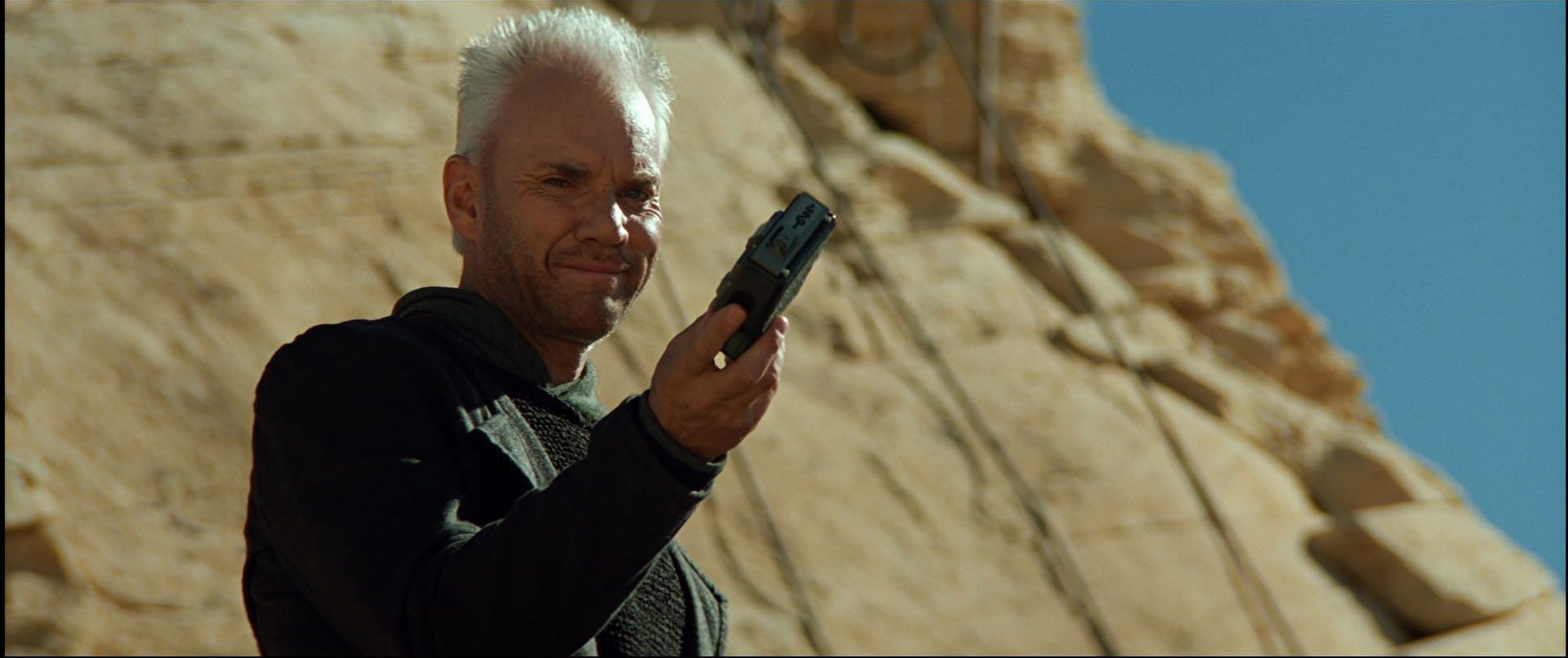
Star Trek Generations
StarTrek.com
Having lost their planet to the Borg and with nowhere else to go, El-Aurian refugees were aboard two transport ships that had a brush with the Nexus during the U.S.S. Enterprise-B's celebratory launch in Generations.
The Federation starship rescued Guinan and Soran, and while the former moved on with her life, the latter became obsessed with finding his way back into the Nexus at all costs. The devastation wrought by the Borg pushed Soran to the brink of genocide, but the Collective's neverending toll on Jean-Luc Picard turned out to be far more subtle.
In Picard's "," Dr. Beverly Crusher deduced that Picard had never really suffered from irumodic syndrome. Captured by the Borg and assimilated into Locutus, Picard had instead been modified to pass on a sort of organic technology to his son, Jack. Though the Borg's impact on Soran and Jack differed, the end result was the same — Jack's altered physiology nearly initiated an entire planet's annihilation.
The Picard Family Line
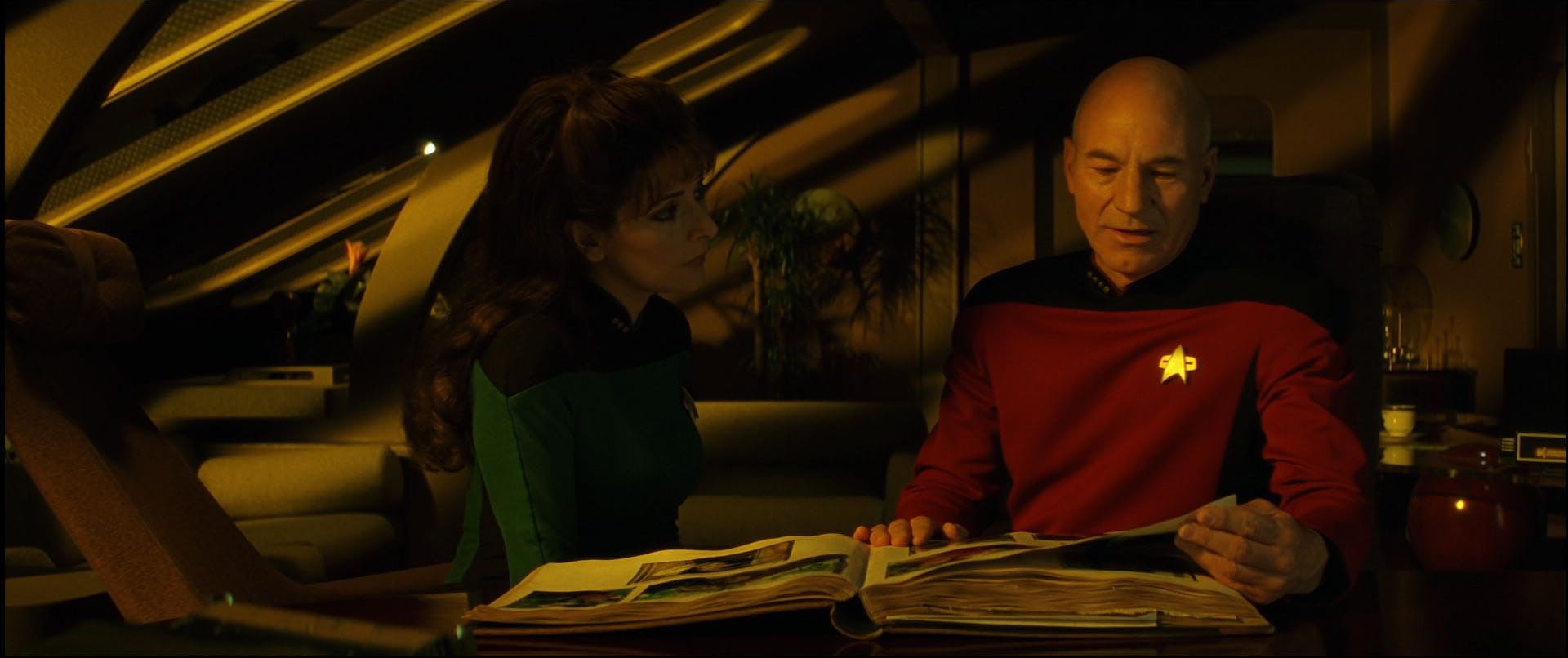
Star Trek Generations
StarTrek.com
Upon learning that his brother and nephew had died in a fire, Captain Picard confided in Counselor Troi and explained that he felt his nephew was as close as he'd get to having a child of his own. Aside from his hope to see the boy attend Starfleet Academy, Picard also liked to think that his nephew's birth had relieved him of the responsibility of carrying on the family line himself.
As shown in Generations, the captain was distraught over the notion that he would be the last Picard. Picard's final season brought this thread full circle, as the reveal that Jack Crusher was his son gave him a second chance at having a family of his own. To Picard's delight, Jack even decided to join Starfleet and embark on the same adventures he wished his nephew could have experienced ("").
Android Emotions
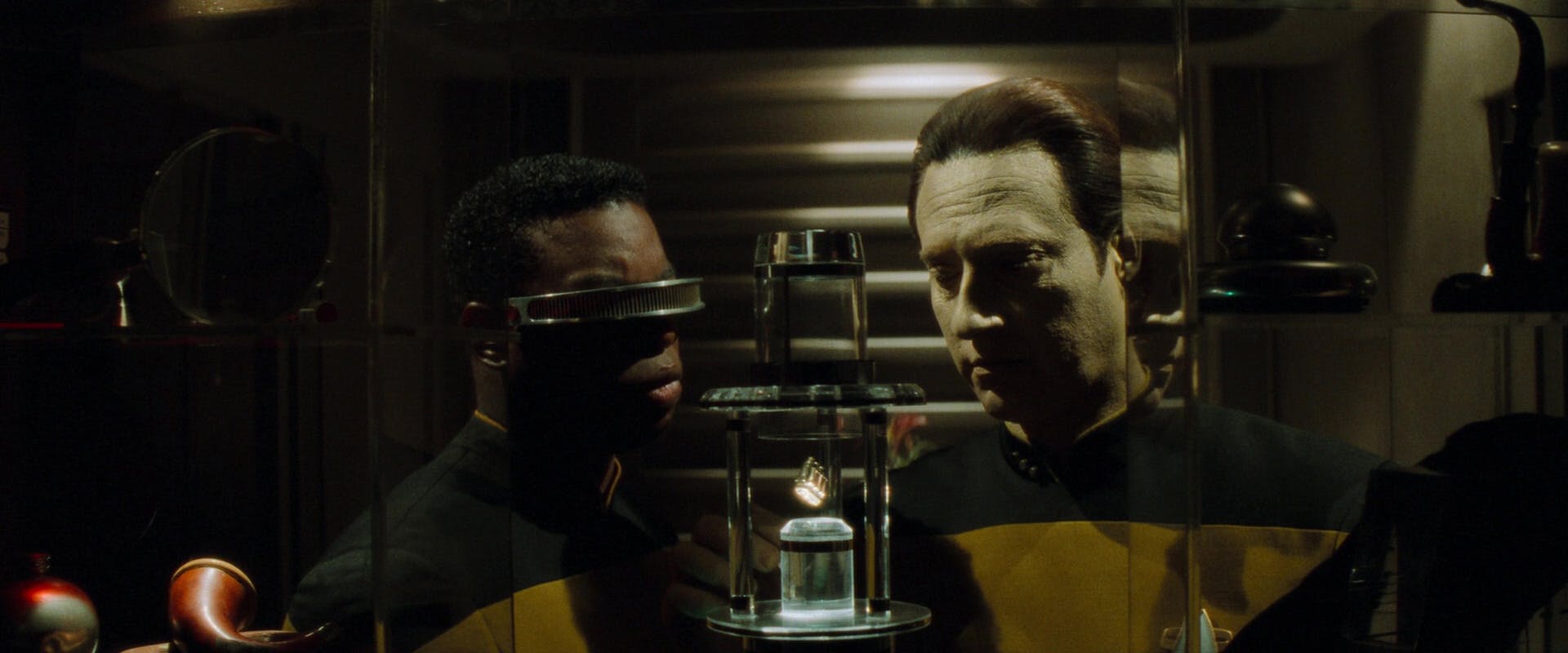
Star Trek Generations
StarTrek.com
Although Data's exploration of human emotions was present prior to Generations, the film saw him finally take a step forward and install the emotion chip that had been constructed for him by . The new sensations caused Data distress, but he ultimately opted not to remove the chip.
Picard's "" found Data at the dawn of yet another significant leap. His memories resurrected within an extremely advanced synthetic body, Data overcame and assumed control of his new, human-like form. Data relayed his wish that his colleagues would see the friend they once knew within him, nevertheless admitting he had changed and was capable of furthering his investigation into the totality of the human experience. Complete with aches, pains, contractions, humor, and feelings, this upgraded Data saw endless potential for his own evolution.
Moments of Bliss
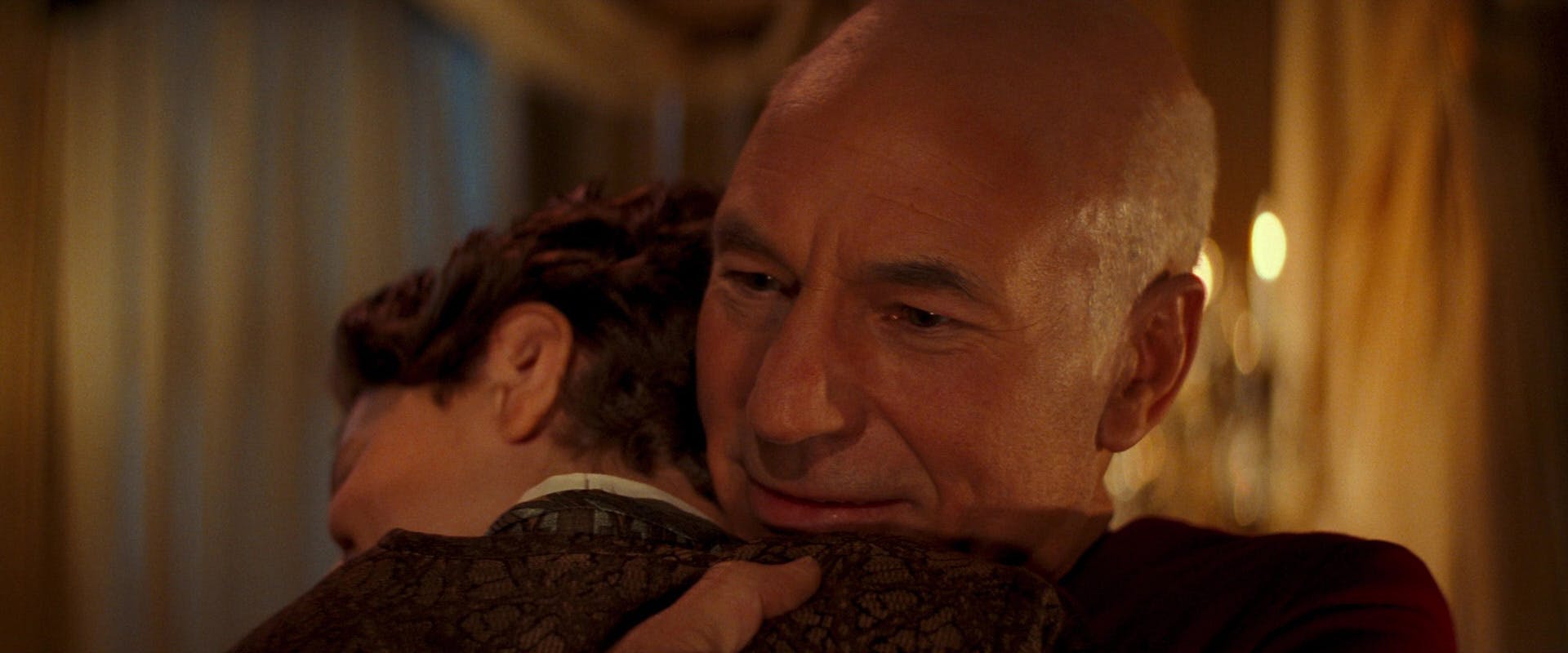
Star Trek Generations
StarTrek.com
When Captain Picard entered the Nexus in Generations, he witnessed an existence where his nephew survived and he had a wife and children who adored him. In Guinan's words, being within the phenomenon was like living inside joy. Whether due to Guinan's warning or his own devotion to saving the population of Veridian III, Picard managed to shake off this unprecedented bliss and elect to leave the Nexus.
Picard's "The Last Generation" brought Jack Crusher to a similar juncture, as the countless voices he heard within the Borg Collective imparted him with peace and euphoria. Harnessing his own search for family, his history with the Borg, and perhaps even an indirect hint of his Nexus encounter, Picard convinced his son to reject the Collective's false sense of belonging and rejoin his real family.
A Lesson from a Legend
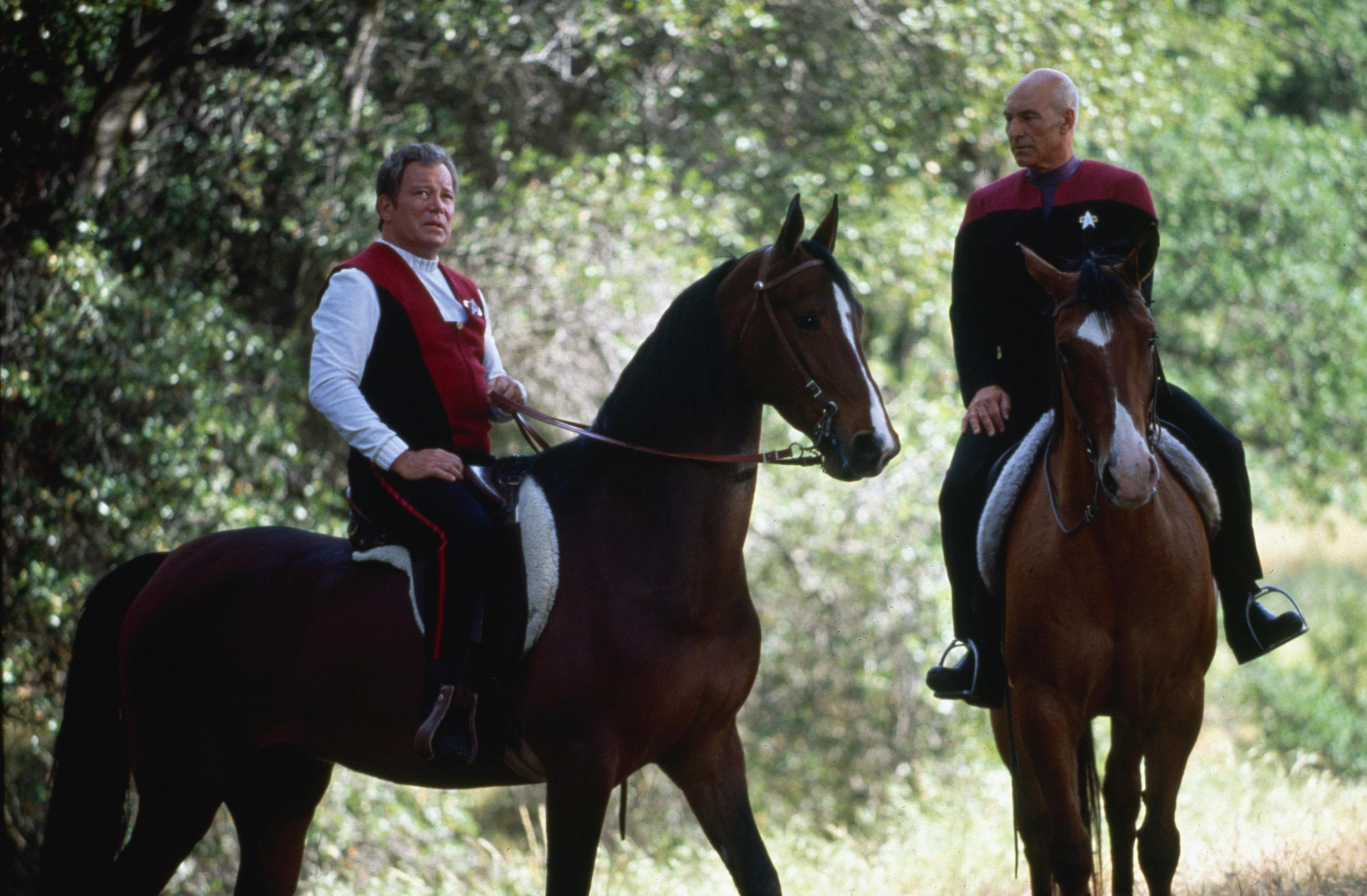
Star Trek Generations
StarTrek.com
In Generations, Picard asked Kirk to exit the Nexus and assist him in stopping Soran's plan to wipe out Veridian III's sun. Agreeing to return with Picard, Kirk treated the U.S.S. Enterprise-D's captain to some prescient advice — don't let Starfleet take him off the bridge of his ship, as that's where he could make a difference.
Of course, Picard accepted a promotion to admiral and subsequently retired when the Federation turned its back on Romulan relocation efforts, but Picard's third season deposited him in the Enterprise-D's center seat once more, at least temporarily. In fact, his old command's computer still recognized him as Captain Picard, an informal demotion harkening back to Kirk's plea that Picard not accept a promotion. Reunited with his ship, his crew, and his chair, Picard guided the Enterprise-D into battle and saved Earth from the Borg Queen's clutches, ensuring the Collective would never threaten the galaxy again ("The Last Generation").
A Captain's Corpse?

Star Trek Generations
StarTrek.com
Captain Kirk lived a long and full life, yet there was still a tragic element to his heroic death on Veridian III. In Generations, he perished doing what he did best, risking his life in a valiant effort to save others. Afterward, Captain Picard crafted a makeshift burial mound out of nearby rocks and set Kirk's Starfleet delta on his final resting place… well, almost final.
When an away team led by William T. Riker beamed from the U.S.S. Titan-A to Daystrom Station decades later, they came across several odd specimens being kept in stasis aboard the secure facility. One readout listed Kirk's name alongside an internal scan of a human body, seemingly indicating that the storied captain's remains had been retrieved from Veridian III and stored for safekeeping. Whether this was done to preserve his body or for something more nefarious, it's clear that Starfleet assigned a premium value to Kirk's corpse ("").
The Fate of the Enterprise
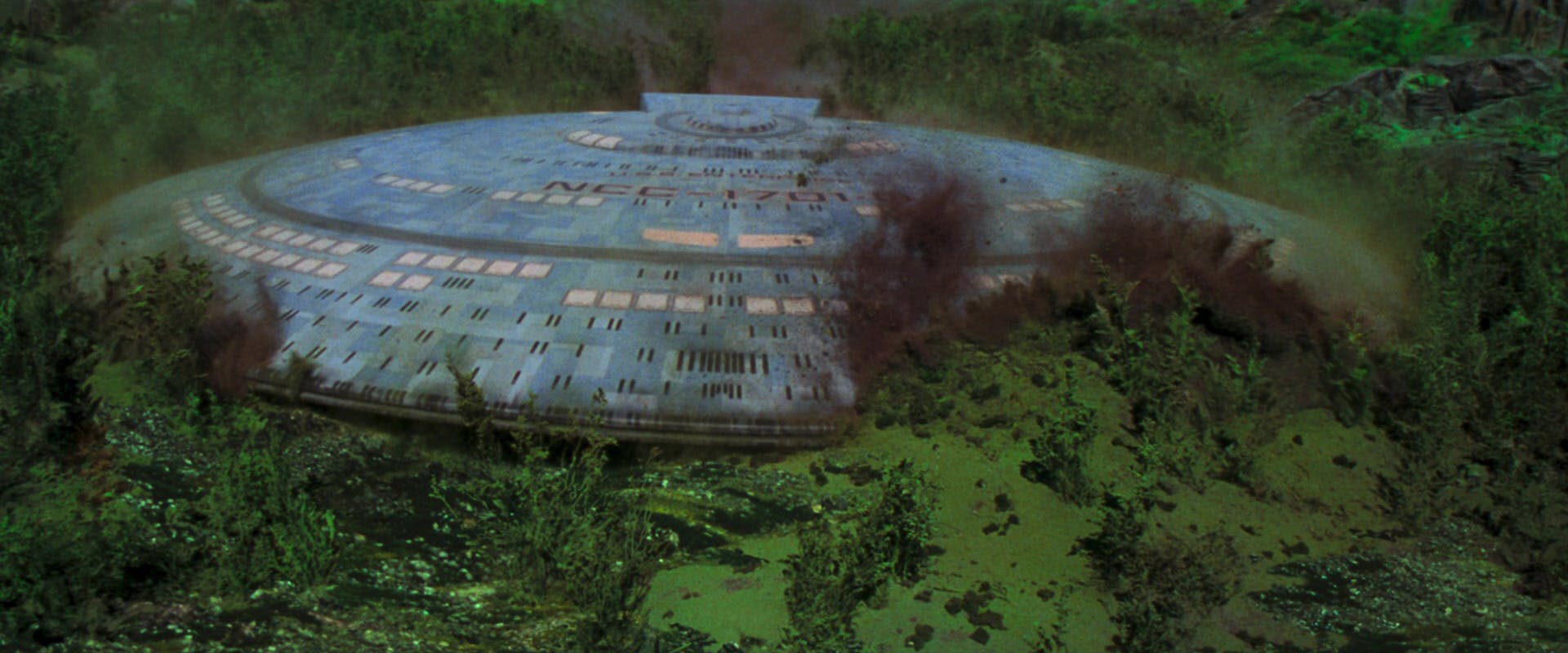
Star Trek Generations
StarTrek.com
In the wake of the U.S.S. Enterprise-D's separation above Veridian III, the ship's stardrive section exploded and its saucer made an emergency landing on the surface. Casualties were light, but the starship could not be salvaged. This resulted in a need for three other Starfleet vessels to transport the Enterprise-D survivors off the planet at the end of Generations. With that said, telling an engineer as skilled as Geordi La Forge that something can not be fixed, especially a ship he loved as much as the Enterprise-D, is akin to challenging them to prove you wrong!
As we learned in Picard's "Võx," the Prime Directive required that the Enterprise-D's saucer be removed from Veridian III so as not to influence its inhabitants. In the ensuing decades, La Forge restored the ship and paired the original saucer with the U.S.S. Syracuse's engines and nacelles. Upon completing its mission to save Earth, the U.S.S. Enterprise-D assumed an honored position at the Fleet Museum.
Reversing Roles
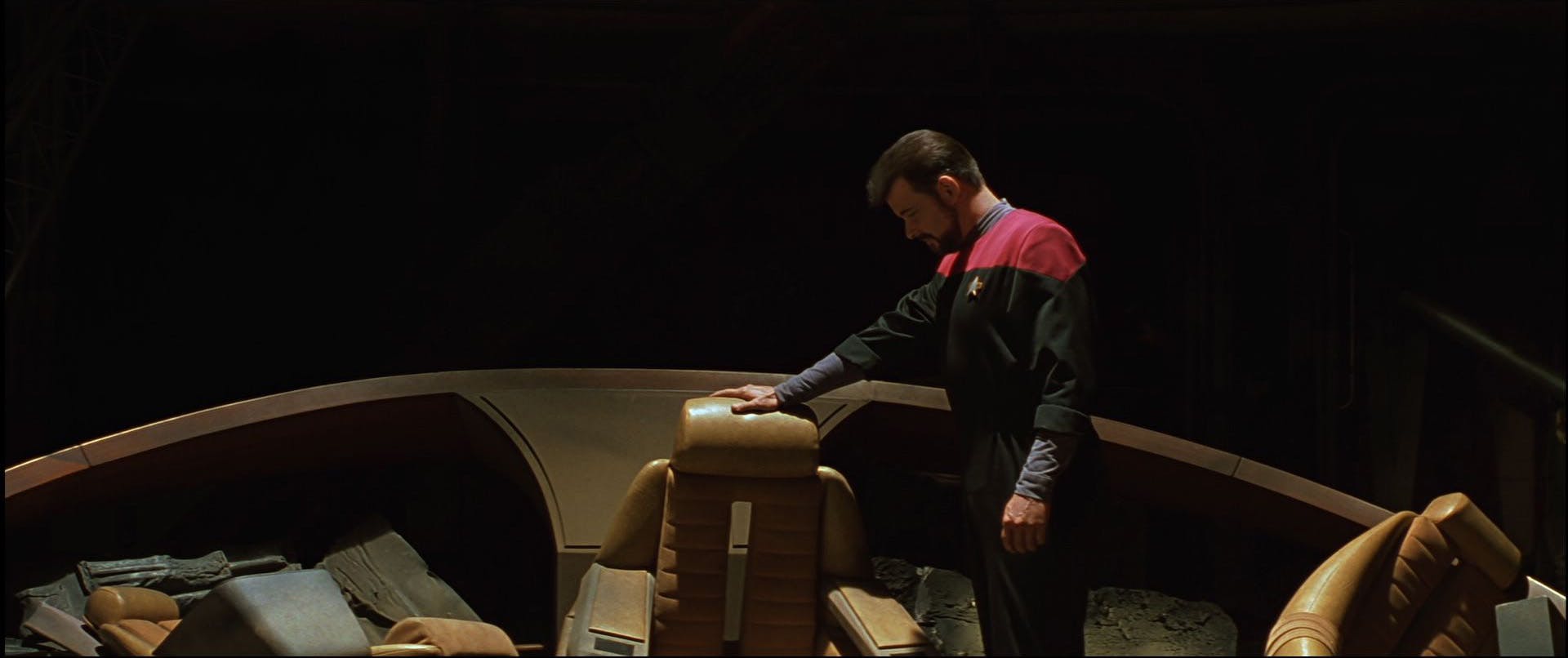
Star Trek Generations
StarTrek.com
The Enterprise-D's apparent "death" in Generations inspired Commander Riker to rummage through its wrecked bridge and reflect on his missed opportunity to one day earn himself a permanent spot in its captain's chair. Riker's eventual captaincy aboard the U.S.S. Titan is well-documented, but Picard's third season added an interesting twist to his resume.
Riker's ship was refit as the U.S.S. Titan-A, which was in turn renamed the U.S.S. Enterprise-G following the defeat of and the Borg Queen. So, in a sense, Riker did indeed serve as the captain of a future Enterprise, he just didn't know it at the time.
As a special bonus, Riker even became the Titan-A's acting captain for a brief spell. In a fun reversal, Admiral Picard sat beside him as his Number One ("").
The Enterprise Endures
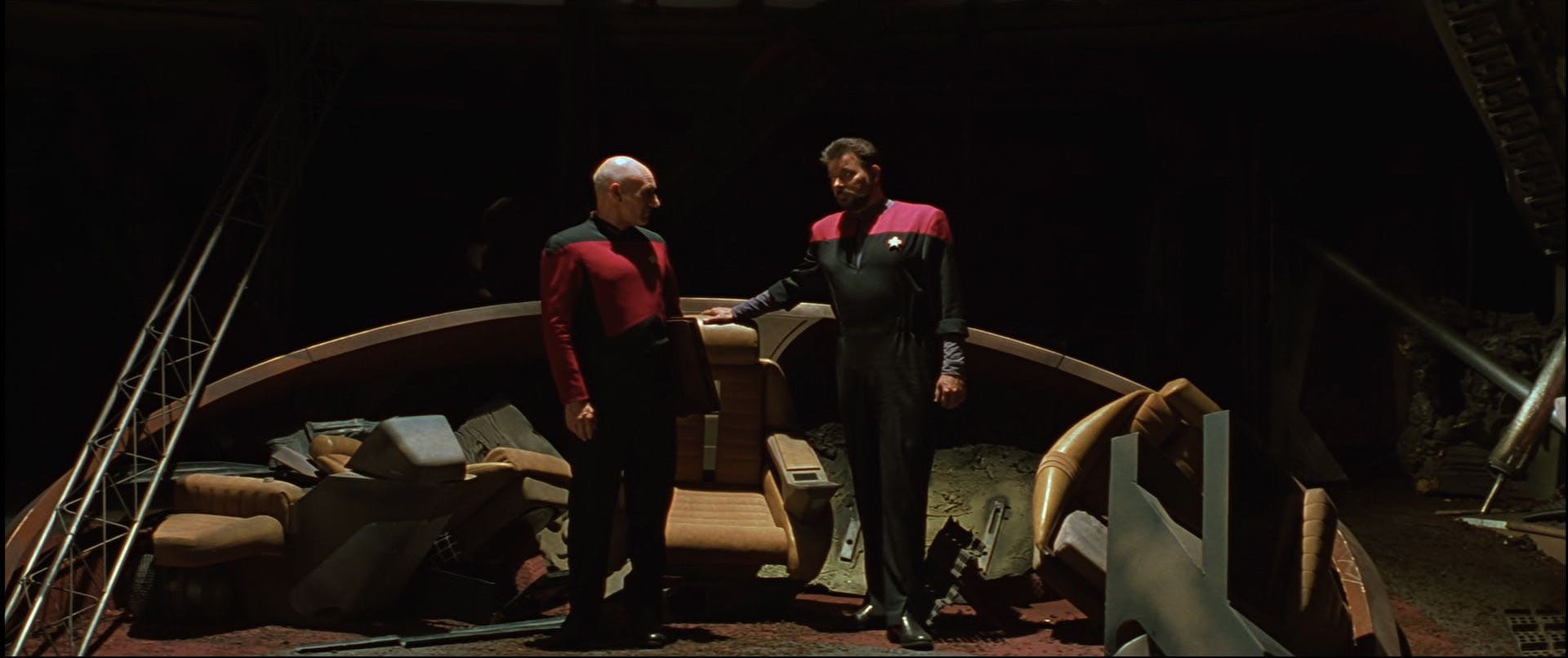
Star Trek Generations
StarTrek.com
On a related note, Riker's conversation with Picard on the Enterprise-D's ruined bridge culminated in the captain's assertion that he doubted this would be the last ship to carry the name Enterprise. The U.S.S. Enterprise-E's appearance in Star Trek: First Contact already confirmed this prediction to be true, but Picard's closing episodes underlined the fact that the Enterprise's historic registry would persist into the 25th Century and beyond.
Although the U.S.S. Enterprise-F was scheduled to be decommissioned, the Titan-A received the distinction of being relaunched as the U.S.S. Enterprise-G, earning it a place among the other key connections which bound Generations and Picard.





